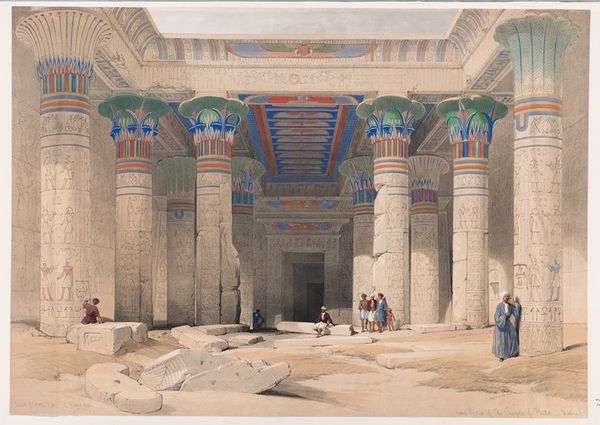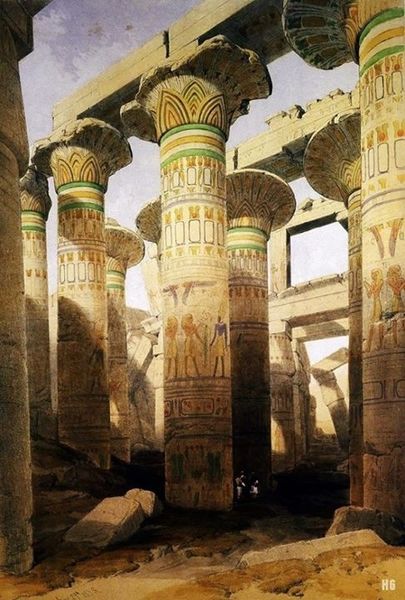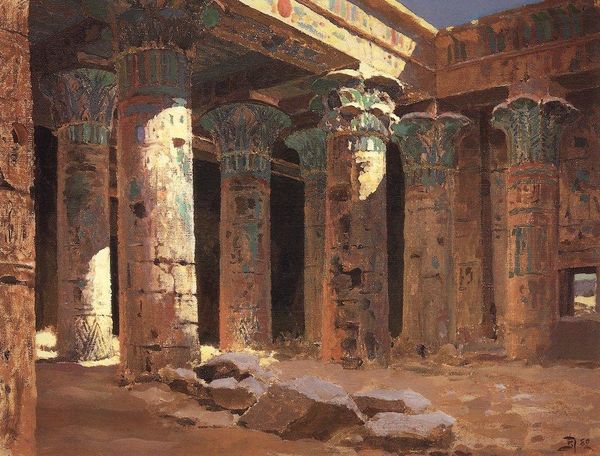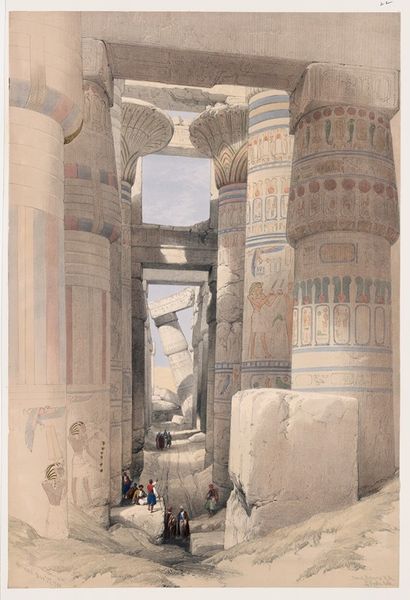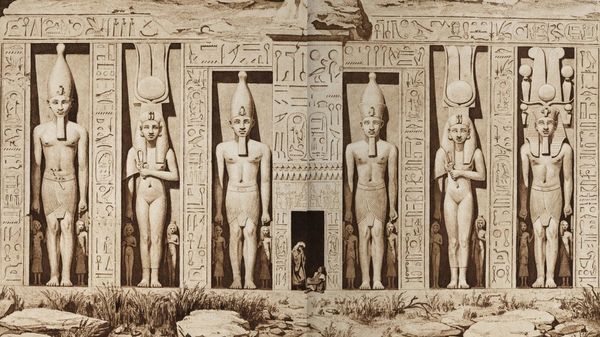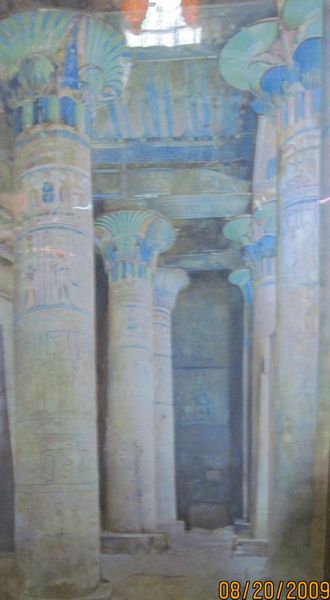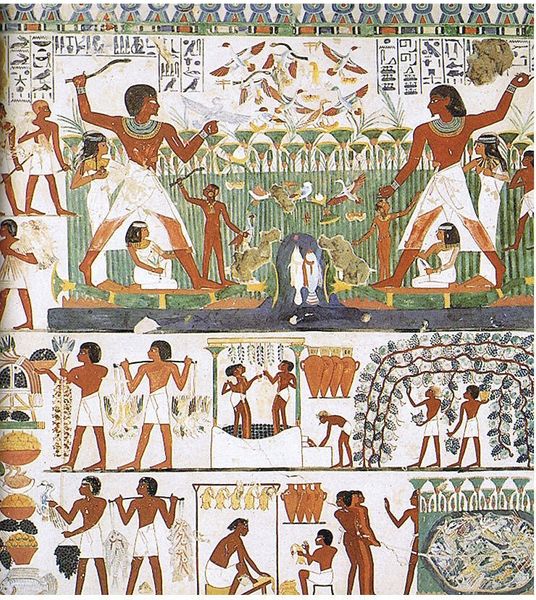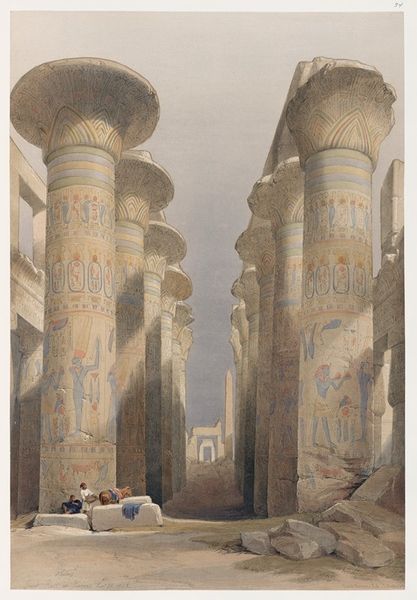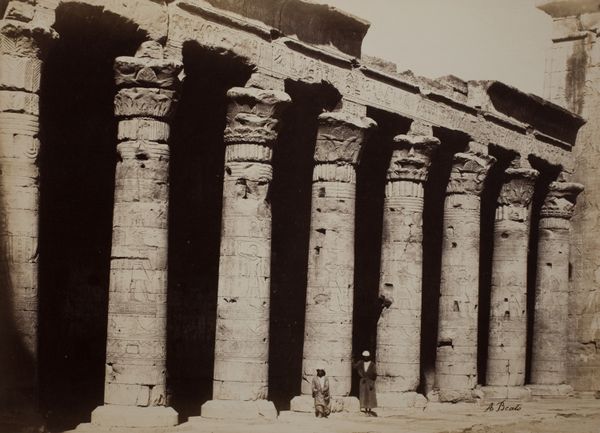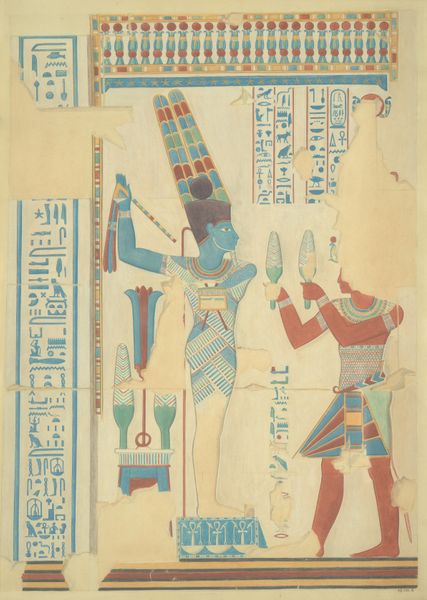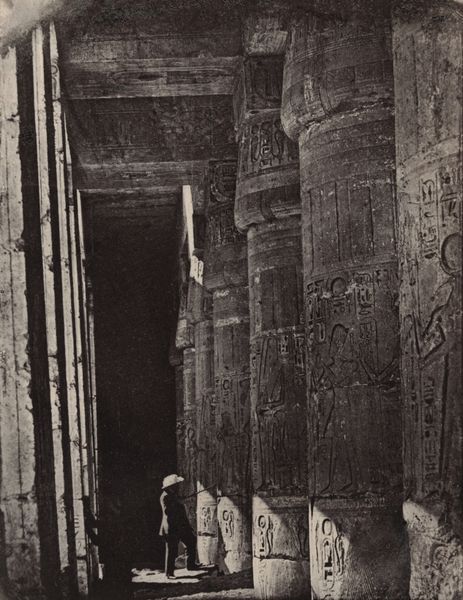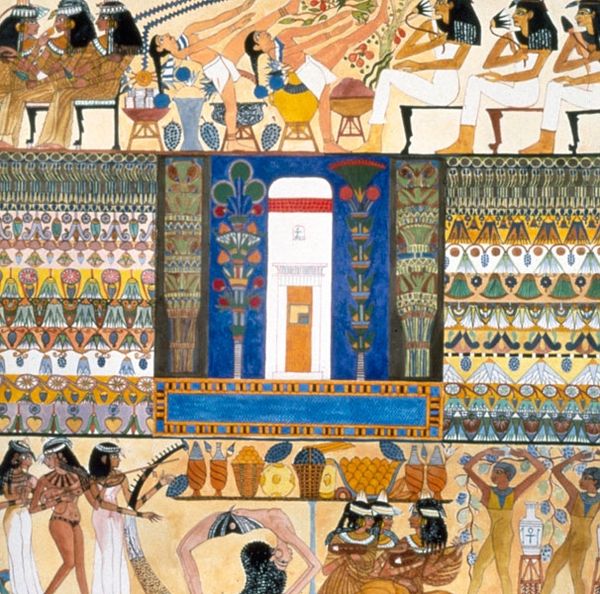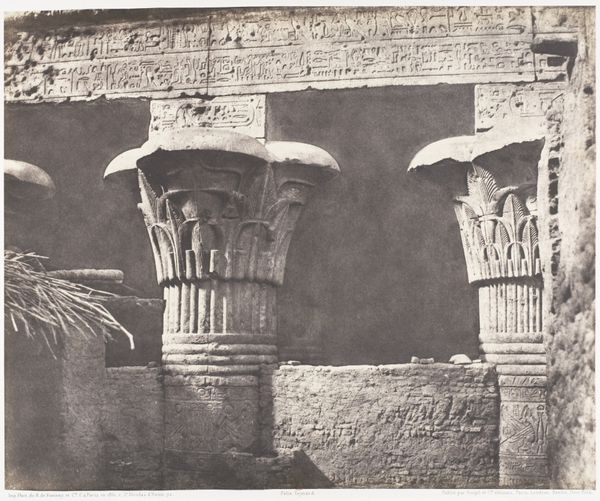
tempera, painting, watercolor
#
tempera
#
painting
#
landscape
#
ancient-egyptian-art
#
holy-places
#
perspective
#
watercolor
#
geometric
#
classicism
#
ancient-mediterranean
#
history-painting
Copyright: Public domain
Editor: We're looking at David Roberts' "Portico of the Temple of Isis at Philae," painted in 1851. It seems to be a tempera and watercolor painting, showcasing the interior of an ancient Egyptian temple. I'm struck by the imposing scale of those columns and how the light filters through them. How do you interpret this work? Art Historian: What catches my eye immediately is Roberts's precise rendering of the hieroglyphs and decorative elements. It speaks volumes about the labor invested not just in the original construction of the temple, but also in Roberts’s meticulous recording. Consider the societal implications. Whose labor built the temple originally, and whose allowed Roberts to travel and paint it? Editor: That’s interesting! I hadn’t thought about the labor involved from both eras. I was so focused on the historical context that I almost missed what you're getting at: this depiction relies heavily on exploitation, doesn't it? Art Historian: Exactly. And it isn't just about the back-breaking labor, it is also about the extraction of materials, the logistics of transport, and the economic systems that supported it all, both in ancient Egypt and 19th-century Europe. Editor: So, are you suggesting the painting isn't just about ancient history, but also a reflection on the means of its production? Art Historian: Precisely. The very act of creating this painting—the tempera, the watercolor, the paper, the pigments—connects us to trade routes, colonial exploits, and a global market of materials and skills. It’s a commodity created from commodities, portraying another form of commodification—that of history and exotic cultures for consumption by a European audience. What materials stood out to you upon viewing it? Editor: The richness and detail are more thought-provoking than initially understood, but the painting prompts a critical understanding of its materials. I'll definitely be more attuned to these factors moving forward. Art Historian: Likewise, this makes me contemplate the socio-economic networks underlying seemingly simple landscape depictions.
Comments
No comments
Be the first to comment and join the conversation on the ultimate creative platform.
